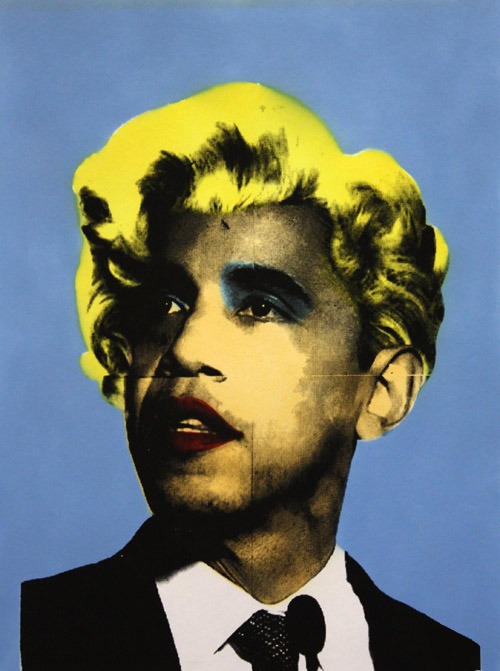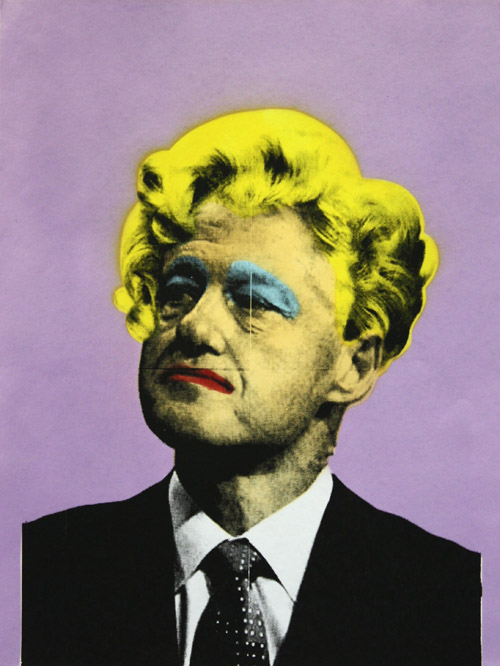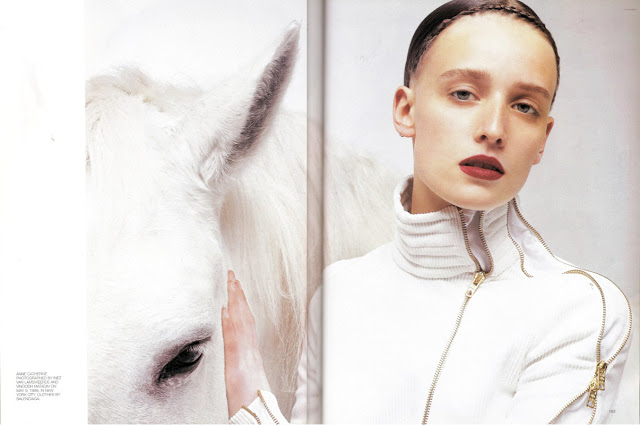 David Bowie and William S. Burroughs. Photo by Terry O’Neill, 1974
David Bowie and William S. Burroughs. Photo by Terry O’Neill, 1974
The Ludovico technique is a fictional aversion therapy from the Anthony Burgess’ novel A Clockwork Orange administered by a “Dr. Brodsky” at the Ludovico medical facility, with the approval of the UK Minister of the Interior. It involved forcing a patient to watch, through the use of specula to hold the eyes open, violent images for long periods, while under the effect of a nausea-, paralysis-, and fear-inducing drug. The aim of the therapy was to condition the patient to experience severe nausea when experiencing or even thinking about violence, thus creating an aversion to violent behavior.
The therapy renders the protagonist of the novel, Alex, incapable of violence even in self-defense, and unable to touch a naked woman or think about having sexual intercourse. In the original novel, Alex is accidentally conditioned against all classical music due to the background score of the films. In the 1971 film, he is conditioned only against Beethoven’s Ninth Symphony. “Ludovico” is the Italian equivalent of the German name “Ludwig”; it is possible the name was selected for this reason.
A Clockwork Orange (Stanley Kubrick, 1971)

 The Man Who Fell to Earth (Nicolas Roeg, 1976)
The Man Who Fell to Earth (Nicolas Roeg, 1976)
 Welcome to the Jungle (Nigel Dick, 1987)
Welcome to the Jungle (Nigel Dick, 1987)
Geffen Records was having a hard time selling the video to MTV. David Geffen made a deal with the network, and the video was aired only one time around 5:00AM on a Sunday morning. As soon as the video was aired, the networks received numerous calls from people wanting to see the video again.
In spite of the early morning airtime, the song’s music video caught viewers’ attention and quickly became MTV’s most requested video. The video in question begins with a shot of Axl Rose disembarking a bus in Los Angeles and a drug dealer (portrayed by Izzy Stradlin) is seen trying to sell his merchandise while Rose rejects it. As Rose stops to watch a television through a store window, clips of the band playing live can be seen and Slash can also be seen briefly, sitting against the store’s wall and drinking from a clear glass bottle in a brown paper bag. By the end of the video Rose has transformed into a city punk, wearing the appropriate clothing, after going through a process similar to the Ludovico technique.
During an interview with Rolling Stone magazine about the music video, Guns N’ Roses‘ manager at the time, Alan Niven, said that he “came up with the idea of stealing from three movies: Midnight Cowboy (John Schlesinger, 1969), The Man Who Fell to Earth (Nicolas Roeg, 1976) and A Clockwork Orange (Stanley Kubrick, 1971).”
To watch Guns N’Roses music video, please take a gander at The Genealogy of Style‘s Facebook page: https://www.facebook.com/The-Genealogy-of-Style-597542157001228/?ref=hl

















































































































